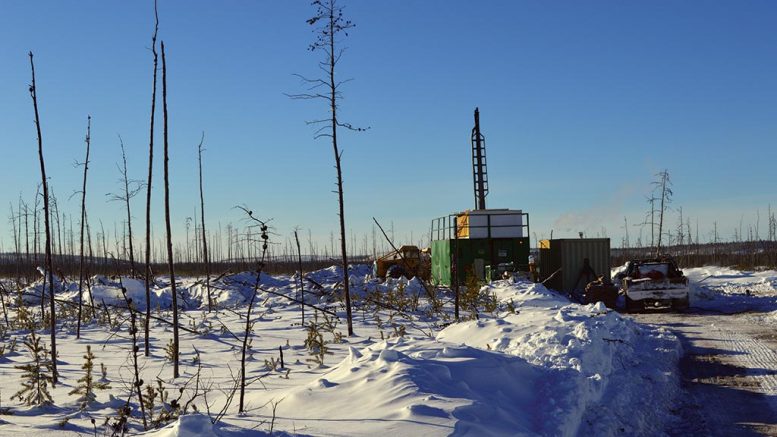The S&P/TSX Venture Composite Index ended the Nov. 29-Dec. 2 trading session at 599.20 points, up 23.56 points or 4.1% higher.
Topping the percentage gainers this week was Queensland Gold, which saw a dramatic 288% or 36¢ rise in its shares to 49¢ each. On Nov. 28, the explorer announced an agreement to acquire a 100% interest in the 86-sq.-km Mia lithium property in the James Bay area of Quebec. The Mia site is comprised of 170 mineral claims, two of which were sampled in 1997 by Quebec government geologists and returned grades of 0.47% and 2.27% Li2O.
“Our entry into the lithium space represents a new value creation opportunity for our shareholders,” says Queensland president and CEO Alicia Milne. “The James Bay region is a highly attractive investment destination for lithium exploration due to its prolific hard rock lithium endowment.”
New Found Gold saw one of the greatest value changes this week, rising $1.57, or 32%, to $6.47, after releasing new, high-grade assays from its Keats West discovery in Newfoundland. On Dec. 5, the company also announced high-grade intercepts from its nearby Keats North program.
Highlights from Keats North including 2 metres of 117 grams gold per tonne from 249 metres depth in NFGC-22-728, 2.1 metres of 36.5 grams gold from 52.5 metres in NFGC-22-762, and 2 metres of 20.8 grams gold from 120 metres in NFGC-22-825. New Found has begun follow-up drilling targeting these high-grade domains to better define their geometries.
“The structure in this region is complex,” says New Found’s VP exploration Melissa Render, “but with additional drilling and new data points, the interpretation is evolving, and several high-grade targets have been identified for prompt follow-up.”
This week’s most active issue was Fission 3.0 which saw 26.6 million shares change hands before closing at 29¢ on Friday, up 23%. Fission’s stock hit a 52-week high of 31¢ on Dec. 1 after the company reported follow-up results to its new high-grade uranium discovery in the Patterson Lake North property in Saskatchewan’s Athabasca Basin. The follow-up hole, PLN22-038, intersected 12.5 metres of total composite mineralization with significant radiometric count per second (cps) readings.
Drilling highlights from the follow-up hole include 3.5 metres of total composite mineralization with more than 10,000 cps over a 7.2-metre interval from 239 metres, and 2.5 metres of total off scale radioactivity (>65,535 cps) over a 3-metre interval from 244 metres. Hole PLN22-038 is still in progress, while two additional follow-up holes of a seven-hole program are planned in the immediate vicinity of this new mineralization before the Christmas break.


Be the first to comment on "TSX Venture Exchange ends Nov. 28–Dec. 2 trading week higher"